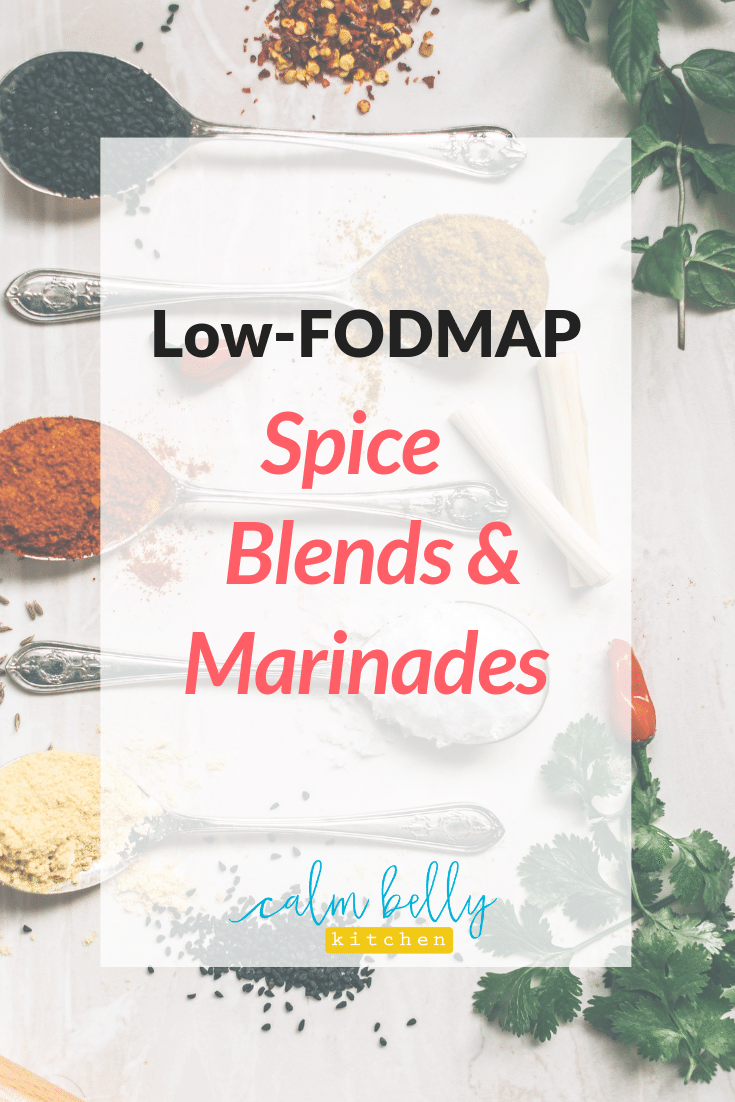Brown Rice Noodle and Veggie Stir Fry with Shrimp (Low-FODMAP, gluten free, dairy free)
Save it on Pinterest!
If giving up traditional wheat pasta still bums you out, this recipe will having you loving life again.
Plus, it's fast, addictive and makes for a great leftover lunch.
This is all because of the star ingredient, Asian rice noodles. They're gluten-free of course, they cook in 3 minutes, and they don't take on a weird, gummy texture the next day-- which means you can easily reheat or eat 'em cold straight from the fridge.
Asian rice noodles are versatile (just try them with extra-virgin olive oil, parmesan and lemon zest), but I absolutely love them in this simple stir fry.
How to make this easy rice noodle stir fry!
Here's how it works: You make a quick, tasty sauce and sauté (or steam, or microwave) some veggies. Meanwhile you boil a big pot of water and cook the noodles.
Then you get your protein ready. In this case, I made sautéed shrimp, but you could use baked salmon or chicken, smoked fish, stir fried pork or tempeh, ground turkey or chicken--pretty much anything.
Finally you add it all back to the pot you cooked the noodles in and toss it up. Done.
All about Asian rice noodles
For this recipe, I used brown rice vermicelli from Annie Chun. You can use any brand. If you have access to an Asian market, you can get them fairly cheaply, but they might only have the white rice variety, not brown.
I like using brown rice noodles because they have 4 grams of fiber per serving (read more about how I like to build my meals around fiber-rich foods). But go with what works for you! I find the Annie Chun brand at large supermarkets, Whole Foods and Vitacost.com.
Asian rice noodles can't flat-out replace Italian pasta (my favorite gluten-free brand of Italian pasta is Jovial, by the way), but they definitely make some tasty meals. I love making pad thai with the thicker type of rice noodles. Have you ever had a low-FODMAP version? Let me know if you'd like a pad thai recipe, and I can make that happen!
If you liked this post, enter your info below to get a free 1-week menu of Low-FODMAP, gluten-free suppers delivered straight to your inbox!
Brown Rice Noodle & Veggie Stir Fry with Shrimp (Low-FODMAP, gluten free, dairy free)
You can use any veggies you want (or any protein--precooked chicken, pork or tempeh makes the cooking even faster). Some good options are zucchini, tomatoes, kale, broccoli, water chestnuts, bokchoy and eggplant. I also like sprinkling sesame seeds on as a garnish, but I forgot to do it for the photo shoot! A little hot sauce is nice too, if you like some heat.
Author: Julie-Calm Belly Kitchen Recipe type: Entree
Prep time: 5 mins Cook time: 30 mins Total time: 35 mins
Serves 4 (makes great leftovers!)
INGREDIENTS
5 tbsp reduced sodium soy sauce (gluten free if needed)
3 tbsp light brown sugar or maple syrup
3 tbsp fresh lime juice (1 to 2 limes)
2 tbsp rice vinegar
2 tsp sesame oil
1 tbsp vegetable oil
1 large red bell pepper, sliced into thin 3-inch strips
2 cups matchstick carrots
1 tbsp chopped fresh ginger (1-inch piece)
Cooking spray (or additional vegetable oil)
5 oz spinach leaves
1 1/4 lb medium shrimp, peeled and deveined (frozen, defrosted work well)
1/4 tsp salt, plus additional to taste
Black pepper to taste
8 oz brown rice vermicelli
6 scallions, green parts only, sliced
INSTRUCTIONS
1. In a medium bowl, whisk together the soy sauce, brown sugar or maple syrup, lime juice, rice vinegar and sesame oil. Set aside. Heat the vegetable oil in a large skillet on medium-high heat. Add bell peppers and cook, stirring frequently for about 4 minutes. Add carrots and continue cooking until vegetables are crisp-tender, about 4 minutes more (add a few tablespoons of water to the skillet if vegetables start to stick). Add ginger and about three-quarters of the scallions and cook for 1 minute, stirring frequently. Transfer to a medium bowl.
2. Return skillet to the stove top, mist with cooking spray (or add more vegetable oil) and heat on medium. Add spinach and cook, stirring frequntly, until wilted, 2 to 3 minutes. Add to bowl with carrot mixture.
3. Return the skillet to the stove top one more time and mist with cooking spray (or add more vegetable oil). Heat on medium-high. Add shrimp, 1/4 tsp salt and black pepper to taste. Cook, turning occasionally, until shrimp are firm to the touch and opaque in the thickest part, 4 to 6 minutes.
4. Meanwhile, bring a large pot of water to a boil. Add rice noodles and cook, stirring frequently, until al dente, about 3 minutes. Drain in a fine mesh strainer and rinse with cold water. Return noodles to the pot you cooked them in. Give the soy sauce mixture a quick whisk and add to the noodles. Heat on medium high and bring to a simmer. Reduce heat to medium and add the vegetable mixture. Gently toss until combined and heated through. Stir in the shrimp. Taste and season with additional salt and pepper if needed. Serve right away and garnish with the remaining scallions.
Nutrition Information
Serving size: 1/4 of recipe Calories: 492 Fat: 9g Saturated fat: 2g Carbohydrates: 68g Sugar: 14g Sodium: 1302mg Fiber: 9g Protein: 38g






































